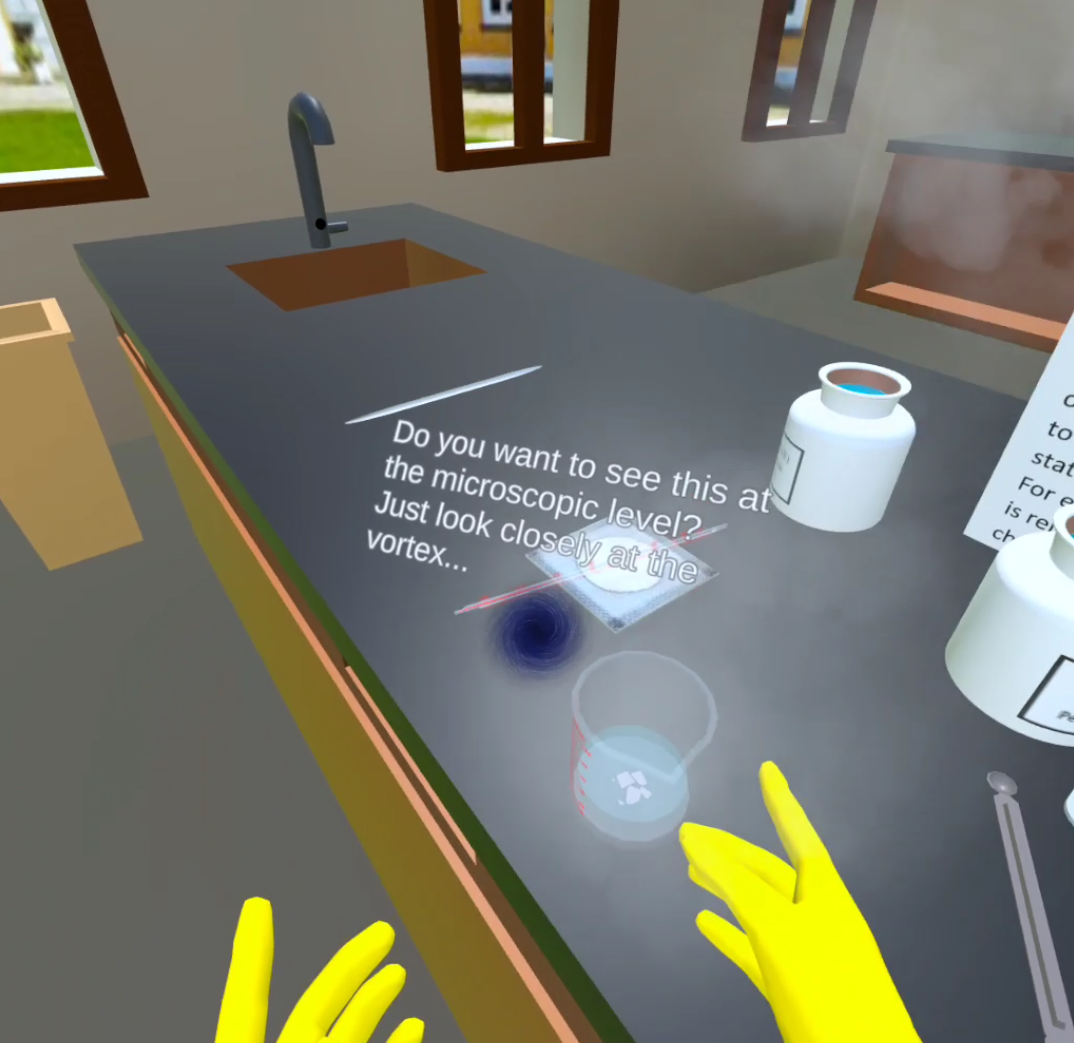Recently, I had some research published in the proceedings of the 2020 International Conference of Learning Sciences. It centered on a study I conducted where graduate students were asked to conduct a couple of chemistry experiments in a virtual reality (VR) simulation of a school laboratory. (Full paper is here).
The objective of the study was to observe any differences in learning gains between the group of students in VR versus a control group of students in a physical laboratory classroom. Differences in behaviors within the VR simulation vs. the control group were also noted.
Findings were interesting! Students learned general chemistry content knowledge, experiment-specific knowledge, and laboratory safety procedures equally well between the VR simulation and the real-life lab conditions. For future use of VR in educational settings, this bodes well. Based on the measures used, learning happened as well in VR as they would in real-life. Thus, this provides a good stepping stone to more in-depth, nuanced studies in the future.
Regarding lab safety behaviors, such as proper thermometer and chemical-handling techniques, the real-life participants exhibited these more frequently than the VR participants. Not surprisingly, participants tended to clean up lab materials more frequently in real-life than in VR. These findings pose an interesting dilemma for VR use in science settings. Students will obviously behave differently knowing certain actions are not as consequential as they would be in real-life. So would these lax behaviors become ingrained with consistent VR use? Or would students be able to easily switch to more careful behaviors once they return to physical laboratories? Future research will hopefully provide the answers to questions like these.

